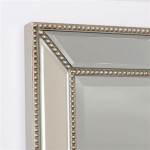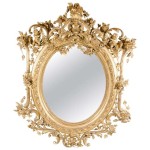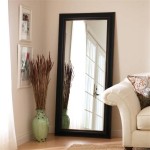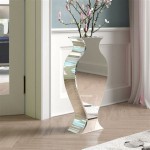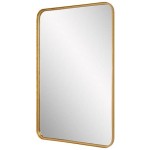Why Can't Convex Mirrors Produce Real Images?
Convex mirrors, characterized by their outward curvature, are frequently encountered in everyday life, from security mirrors in shops to passenger-side car mirrors. A defining characteristic of these mirrors is their inability to form real images, a concept central to understanding their optical behavior. This article explores the underlying principles that prevent convex mirrors from producing real images.
The formation of an image, whether real or virtual, depends on the behavior of light rays as they interact with a reflecting surface. A real image is formed when light rays originating from an object converge at a point after reflection. This convergence allows the image to be projected onto a screen. Conversely, a virtual image is formed when reflected light rays appear to diverge from a point behind the mirror. These diverging rays do not actually converge, and thus, a virtual image cannot be projected onto a screen.
The curvature of a mirror plays a crucial role in determining how light rays reflect and subsequently, the type of image formed. Convex mirrors, with their outwardly curved reflecting surface, cause incident parallel light rays to diverge after reflection. This divergence is a direct consequence of the law of reflection, which states that the angle of incidence equals the angle of reflection, relative to the normal line at the point of incidence. Due to the varying angles of the normal line across the curved surface of a convex mirror, parallel incident rays are reflected at different angles, spreading outwards.
To understand image formation, it's helpful to consider specific light rays emanating from an object. Two commonly used rays are those parallel to the principal axis and those passing through the center of curvature. In the case of a convex mirror, the center of curvature is located behind the mirror. Rays directed towards the center of curvature are reflected back along their incident path, as the angle of incidence is zero. Rays parallel to the principal axis, after reflection, appear to diverge from a point behind the mirror called the focal point.
When tracing these reflected rays back, they appear to intersect behind the mirror, forming a virtual, upright, and diminished image. This virtual intersection point is where the image appears to be located for an observer. Since the reflected rays do not actually converge, there is no point in space where the light rays physically meet. Hence, a real image cannot be formed.
The location and size of the image formed by a convex mirror can be determined using the mirror equation: 1/f = 1/do + 1/di, where 'f' is the focal length, 'do' is the object distance, and 'di' is the image distance. For convex mirrors, the focal length is negative, reflecting the fact that the focal point is behind the mirror. The image distance 'di' also becomes negative, indicating a virtual image located behind the mirror.
The magnification of the image, represented by 'm', is given by the equation m = -di/do. Since 'di' is negative for convex mirrors, the magnification is always positive and less than one. This confirms that the image formed is always upright and smaller than the object.
The inability of convex mirrors to form real images is not a disadvantage but rather a characteristic that makes them useful in specific applications. The diverging nature of reflected rays provides a wider field of view compared to plane or concave mirrors. This wider field of view is precisely why convex mirrors are employed as security mirrors in shops and as passenger-side car mirrors. The diminished size of the image allows a larger area to be viewed, albeit at a reduced scale, enhancing the observer's awareness of their surroundings.
Furthermore, the virtual nature of the image ensures that it is always located behind the mirror. This eliminates the possibility of the image being projected onto a surface, preventing potential confusion or misinterpretation of the reflected scene. In safety applications, this clear distinction between the real objects and the virtual image is crucial.
The principles of reflection and the geometry of convex mirrors dictate the formation of virtual, upright, and diminished images. The diverging nature of the reflected rays, a consequence of the outward curvature, prevents the convergence of light rays necessary for real image formation. While this characteristic limits their use in certain optical systems, it also makes convex mirrors invaluable tools for enhancing visibility and safety in various everyday scenarios.
Can A Convex Mirror Produce Real Image
Can A Convex Mirror Form Magnified Image Quora
Can A Convex Mirror Form Real Image Quora
Can A Convex Mirror Produce Real Image When The Object Is Virtual And Vice Versa Concave If Yes How Will It Be Possible Why Quora

Convex Mirror Image Formation Conditions Ray Diagram Uses

Can A Convex Mirror Form Real Image Explain

Can A Convex Mirror Produce Real Image When The Object Is Virtual And Vice Versa Concave If Yes How Will It Be Possible Why Quora

Briefly Discuss Can A Convex Mirror Or Diverging Lens Ever Produce Real Image If Not Why Yes How Homework Study Com

If The Image Formed By A Spherical Mirror All Positions Of Object Placed In Front It Is Always Erect And Diminished What Draw Labelled Ray

Understanding Image Formation In Convex Mirrors Testbook

